Butterflies – A brief Guide
Across the world there are thousands upon thousands of different butterfly species, each one different and perfectly adapted to their habitat.
A butterfly is a flying insect, that mainly flies in day time, of the order Lepidoptera (the order of butterflies and moths). This order is made up of moths and the three subfamilies of butterflies: skipper butterflies (subfamily Hesperioidea), true butterflies ( subfamily Papilionoidea) and moth-butterflies ( subfamily Hedyloidea). Any insect family which doesn’t fit into one of those tree subfamilies is classified as a moth.
Butterflies are categorized by their scale-covered wings.
Adaptations & Defense Systems
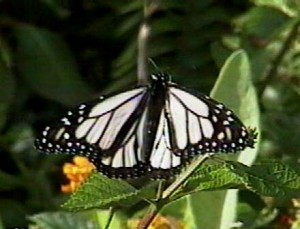 Butterflies have adapted in many ways to increase their chances of survival. Many exhibit polymorphism, where two or more different phenotypes of the same species live together in the same environment – one prime example of another species doing this is the (typical) Jaguar and the melanistic Jaguar (which makes up about 6% of the population).
Butterflies have adapted in many ways to increase their chances of survival. Many exhibit polymorphism, where two or more different phenotypes of the same species live together in the same environment – one prime example of another species doing this is the (typical) Jaguar and the melanistic Jaguar (which makes up about 6% of the population).
Mimicry – butterflies display lots of forms of mimicry; they copy characteristics that belong to other butterfly species, in order to protect one or both species. Mimicry can occur in scent, behaviour, sound, appearance and even location. Camouflage is believed to be a visual form of mimicry which many butterflies use in order to protect themselves from predators. Several harmless butterfly species resemble species of the highly poisonous new-world butterfly species.
Aposematism in some butterfly species acts as a secondary defense system using colouration to warn predators of further defense mechanisms the insect has. Typically a red colour connotes danger to predators and warns them to stay away.
Many butterflies, such as the Peacock butterfly, have spots or ‘eyes’ on their wings to deter predators from them and give the illusion that they are always watching the predators. It is believed that many animal species’ brains are programmed to look for eyes, so many butterflies have adapted in this way to give themselves more protection.
Some butterflies, such as the monarch, will migrate.
Life Cycle
Butterflies have a four stage life cycle:
Egg – Caterpillar – Chrysalis – Butterfly
It is a common misconception that butterflies have a short life – adult butterflies, depending on the species, can live for a few weeks to even a few years. Many species lengthen their lives by having long larval life times or remain dormant in the egg to survive the winter. Some adults (butterflies) will often hibernate during the winter.
Caterpillars, also known as butterfly larvae, nearly always emerge from the egg on a ‘host plant’ which they will be able to eat. (The mother butterfly will nearly always lay her eggs on a plant that the caterpillars will be able to eat). Caterpillars will spend most of their time in search of more food, and then a suitable pupation place to form a chrysalis. By this time it is believed that their wings have already started to form on the molecular level. The larvae will transform into pupae (chrysalids) where their wings fully grow and they emerge as a butterfly. This transformation is done by anchoring themselves onto a ‘good’ place, usually the underside of a leaf, and moulting for a last time. The pupal wings of the larvae undergo a very rapid process of mitosis, forming a strong structure that is capable of flight. During this transformation it is believed that the butterfly is at its most vulnerable stage as most species can not move. However, some species are believed to be able to slightly move their abdominal segments, resulting in visible movement or sound which frightens predators.
Once the adult is sexually mature, the insect is known to be at the ‘amigo’ stage.
Common Species
Here is a very brief list of some common species.
Common Butterfly Species in the UK:
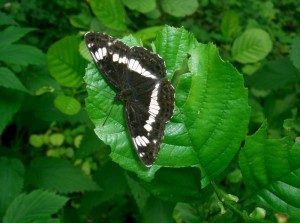 Peacock
Peacock
White Admiral
Red Admiral
Essex Skipper
Painted Lady
Cabbage White
Small White
Small Tortoiseshell
Purple Emperor
Please Note: Not all of these species will be able to be found everywhere in the UK.
Common Butterfly Species in the U.S States:
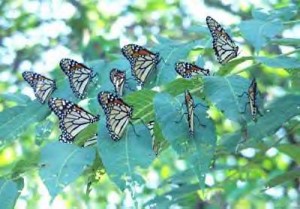 Monarch
Monarch
Two-tailed Swallowtail
California Dogface Butterfly
Diana Fritillary
Eastern Tiger Swallowtail
Zebra Longwing
Red Spotted Purple or White Admiral
Please Note: Not all of these species will be able to be found in every state. For a list of Common U.SÂ butterflies by state have a look at this page.
Common Butterfly Species in Menorca & Mallorca:
Swallowtails
Clouded White
Small White
Bath White
Large Wall
Tree Grayling
Holly Blue
Long-Tailed Blue
Green Hairstreak
(Not all species will be able to be found in every part of each island).
Common Butterfly Species in Australia, (Australia has more than 400 species of butterfly – here are just a few):
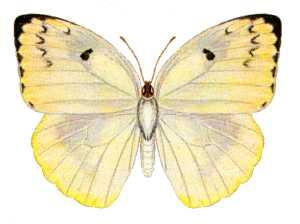 Four-barred Swordtail
Four-barred Swordtail
Chain Swordtail
Chequered Swallowtail
Cains Birdwing
Small Cabbage White
Lemon Migrant
Caper White
White Albatross
Yellow Jewell
Turquoise Jewell
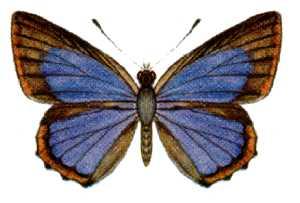
Feeding
Butterflies feed on the nectar of many plants. Common feeding plants are Lavender, Buddleia, Roses, Ivy and Thyme. Click here to find out which plants butterflies commonly feed on.
 July 24, 2011
·
July 24, 2011
·  Maddia (Admin) ·
Maddia (Admin) ·  Comments Closed
Comments Closed
 Tags: butterfly adaptations, butterfly species, common butterfly species in menorca, common butterfly species in the uk, common butterfly species in the US, menorca & mallorca · Posted in: Butterfly Information, Butterfly Species
Tags: butterfly adaptations, butterfly species, common butterfly species in menorca, common butterfly species in the uk, common butterfly species in the US, menorca & mallorca · Posted in: Butterfly Information, Butterfly Species


